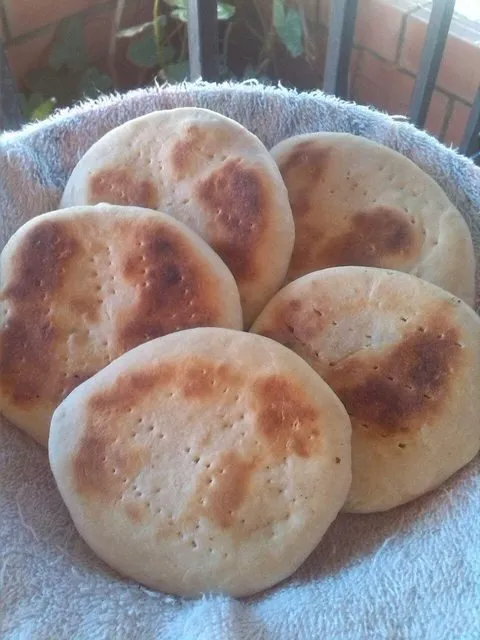
¡Hola de nuevo Hivers! Hoy les voy a mostrar una receta muy rica y que me gusta preparar con frecuencia: Arepas de trigo andinas. Muchos sabrán que la arepa es un plato obligatorio en la mesa del venezolano, la comemos con prácticamente cualquier cosa y tiene muchas variantes. Una de ellas es la arepa de trigo que es típica de la región andina del país, ya que antiguamente se cultivaba el trigo allí. Esta arepa es como un pan plano muy suave y con un toque dulzón. Sin más rodeos, estos son los ingredientes:
2 tazas de harina de trigo todo uso
1 huevo
2 cucharadas de mantequilla
2 cucharadas de leche en polvo
2 cucharadas de azúcar
1 cda de polvo de hornear
½ cdta de sal
Una pizca de bicarbonato
Un poco de agua.
Hello again Hivers! Today I am going to show you a very tasty recipe that I like to prepare frequently: Andean wheat arepas. Many will know that the arepa is an obligatory plate in the table of the Venezuelan, we eat it with practically any thing and it has many variants. One of them is the arepa of wheat that is typical of the Andean region of the country, since in the past the wheat was cultivated there. This arepa is like a very soft flat bread with a sweet touch. Without further ado, these are the ingredients:
2 cups of all-purpose wheat flour
1 egg
2 tablespoons of butter
2 tablespoons of powdered milk
2 tablespoons of sugar
1 tbsp baking powder
½ tsp of salt
A pinch of bicarbonate
A little bit of water
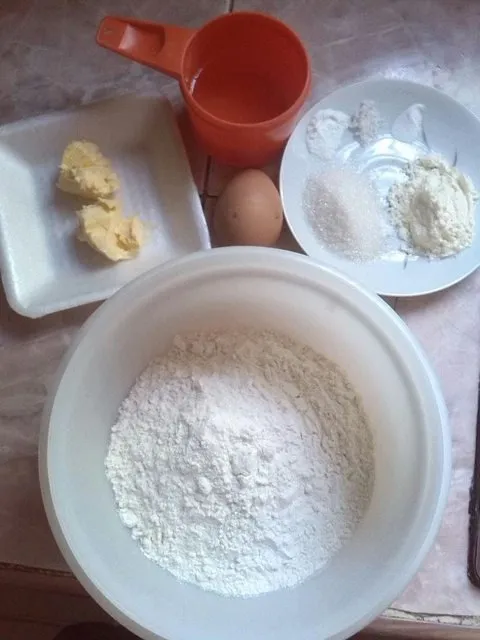
Procedimiento: | Procedure:
1- Coloca todos los ingredientes secos en un envase y mézclalos.
1- Place all the dry ingredients in a container and mix them.

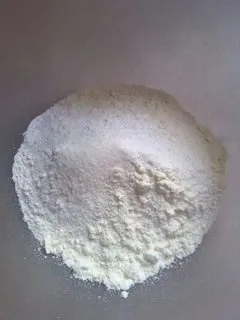
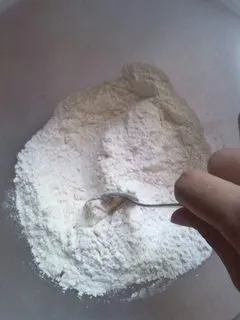
2- Haz un hueco en el centro y agrega la mantequilla y el huevo y revuelve.
2- Make a hole in the center and add the butter and egg and stir.

3- Luego agrega un poquito de agua y revuelve nuevamente. Esta parte es importante porque no queremos que la masa se ponga aguada, es mejor ir añadiéndola de a poco con una cuchara y viendo la consistencia. Yo usé solo unas 3 o 4 cucharadas de agua.
3- Then add a little bit of water and stir again. This part is important because we don't want the dough to get watery, it is better to add it little by little with a spoon and see the consistency. I used only 3 or 4 tablespoons of water.

4- Cuando todo esté parcialmente integrado, vierte sobre un mesón o mesa y comienza a amasar. No requiere ninguna técnica especifica, solo amasa por un buen rato, hasta que la masa este suave y lisa. Si a mitad del amasado se te empieza a pegar no te preocupes, continua amasando, si pasados unos 5 minutos aun se pega, agrega solo un poquito de harina espolvoreada y vuelve a amasar.
4- When everything is partially integrated, pour it over a table and start kneading. It does not require any specific technique, just knead for a good while, until the dough is soft and smooth. If halfway through the kneading process it starts to stick, don't worry, continue kneading. If after a few minutes it still sticks, add just a little bit of flour and knead again


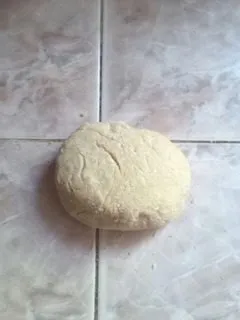
5- Al estar lista la masa la colocamos de nuevo en un envase, la tapamos y la dejamos reposar 30 minutos. El reposo es solo para que la masa se ponga más suave, no va a levar ya que no tiene levadura.
5- When the dough is ready, we place it again in a container, cover it and let it rest for 30 minutes. The resting is only to make the dough softer, it will not rise since it has no yeast.
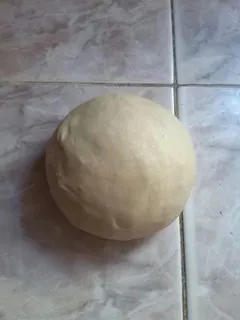


6- Transcurrido el tiempo toman su masa y la colocan de nuevo en el mesón, la estiran un poco, dándole una forma alargada y la dividen en las porciones que quieran.
6- Once the time has passed, take your dough and place it again on the counter, stretch it a little, giving it an elongated shape and divide it into the portions you want.

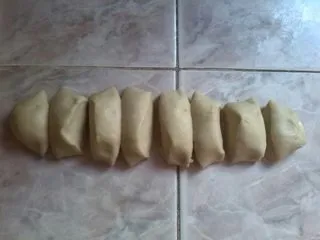
7- Después toman las porciones y forman pequeñas bolas, las estiran un poco y las pinchan con un tenedor. Normalmente estas arepas son más grandes, las mías son pequeñitas porque me gusta hacerlas así.
7- Then they take the portions and form small balls, stretch them a little and prick them with a fork. Usually these arepas are bigger, mine are small because I like to make them like this.

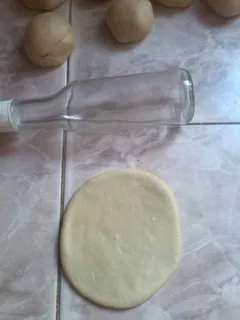

8- Las colocan en un sartén, plancha o budare a fuego muy bajo, y si quieren las pueden tapar por un par de minutos. Deben ir dándoles vuelta varias veces para que se cocinen uniformemente. Verán que se van abombando un poco.
8- Put them in a pan, iron or kettle over a very low heat, and if you want you can cover them up for a couple of minutes. They should be turned over several times so that they are cooked evenly. You will see that they will become a little bit bulky.
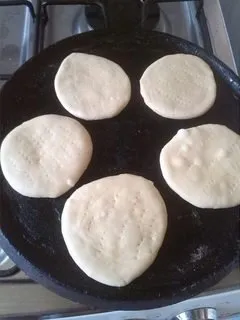
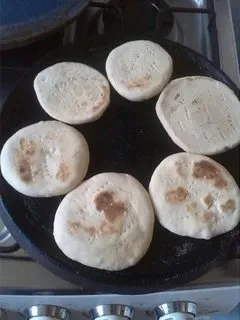
9- En lo que se doren, estarán listas. Retíralas del sartén y colócalas en un plato con un paño limpio para que se mantengan suaves.
9- As soon as they are golden, they will be ready. Remove them from the pan and place them on a plate with a clean cloth to keep them soft.

Ahora las puedes disfrutar con el relleno de tu preferencia en cualquier comida del día. Personalmente me encanta comerlas con perico o mojito (huevos revueltos, con tomate y cebolla y en el caso del último, también leche) y si fuera posible, queso ahumado (aquí no se consigue).
Now you can enjoy them with the filling of your choice at any meal of the day. Personally I love to eat them with perico or mojito (scrambled eggs, with tomato and onion and in the case of the last one, also milk) and if possible, smoked cheese (not available here).
Bueno eso es todo, espero le guste y la compartan y como siempre, ¡que se animen a prepararlo!
Well that's all, I hope you like it and share it and as always, you can prepare it!

Gracias por leerme. | Thanks for reading.
Todas las fotos son de mi autoría. | All photos are my own.

